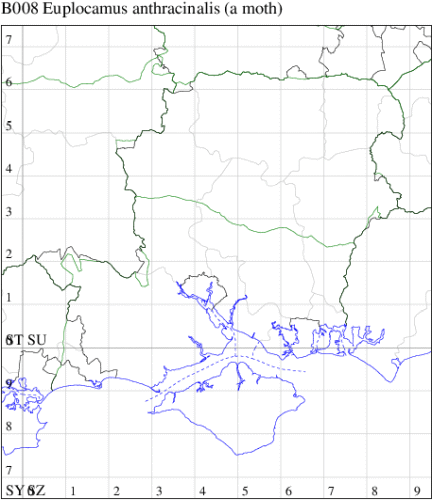Euplocamus anthracinalis
Checklist NumberB008 [B&F: 0197]
Verification
Record requires retention of specimen until confirmed, and may require dissection. Consult with CMR if unsure
Classification
| Family: | Tineidae |
| Subfamily: | Euplocaminae |
| Genus: | Euplocamus |
| Species: | anthracinalis |
| Authority: | (Scopoli, 1763) |
Occurrence in the British Isles unconfirmed. This eastern European species is included on the British list on the basis of an 1802 list indicating it to be a British species. Not recorded in Hampshire or on the Isle of Wight to date. Wingspan 25-30 mm. This large and conspicuous species has a conspicuous forewing pattern of large white spots on a black background and pectinate antennae in the male (MBGBI Vol 2). Larva feeds on dead wood and bracket fungus.

